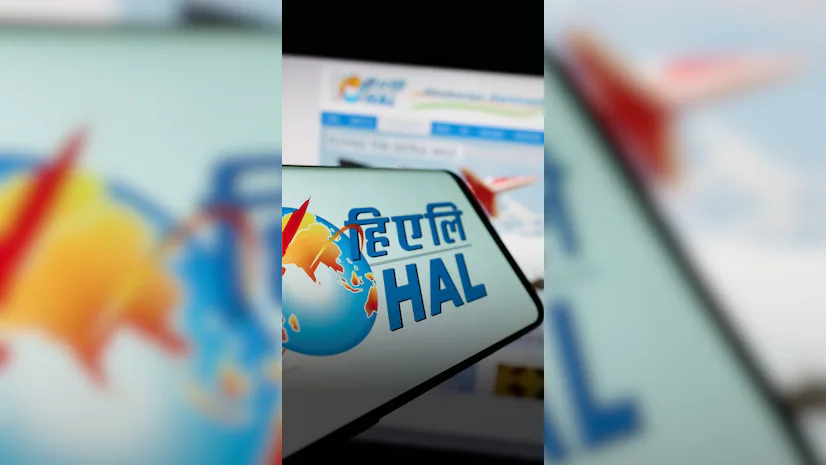India Opens a New Space Chapter: HAL to Manufacture and Commercialize SSLV Rockets
- MGMMTeam

- Jun 21
- 3 min read
India's ambitions to become a global leader in the small satellite launch market received a major boost this week. Hindustan Aeronautics Limited (HAL), the state-run aerospace and defence giant, has secured a landmark ₹511 crore contract to acquire complete manufacturing and operational rights for the Small Satellite Launch Vehicle (SSLV) from the Indian Space Research Organisation (ISRO). The deal, facilitated by the Indian National Space Promotion and Authorization Centre (IN-SPACe), marks the first time that India is transferring full ownership and commercialization rights of an indigenous rocket to a private or semi-private entity.

A Competitive Bid with National Impact
The path to this historic deal was competitive and strategic. Over 20 companies initially expressed interest in the SSLV technology. After a two-stage bidding process, HAL emerged as the top contender, outbidding major consortia, including one led by Adani Group-backed Alpha Design Technologies and another spearheaded by Bharat Dynamics Limited in partnership with Skyroot Aerospace. HAL, notably, was the only company to apply independently rather than in a consortium, highlighting its confidence and capacity in handling complex space technology.
This victory is not just a business milestone for HAL, but a decisive move in the Indian government's broader push to deepen private-sector involvement in the country’s growing space economy.
Technology Transfer and the Road Ahead
Under the agreement, HAL will undergo a two-year mentorship program guided by ISRO. During this phase, engineers from HAL will be trained to construct two complete SSLV rockets from scratch. These will act as “development flights” to ensure technical and operational proficiency. The transition includes full know-how transfer, tooling, manufacturing processes, and testing protocols.
By August 2027, HAL is expected to independently manufacture and operate SSLV launches, including customizing the rocket design, choosing its suppliers, and managing commercial missions. This independence positions HAL as not just a supplier, but as a full-scale launch service provider—capable of offering end-to-end solutions for small satellite customers in India and abroad.
The SSLV Advantage
The Small Satellite Launch Vehicle has been engineered by ISRO to cater specifically to the small satellite market, which has seen exponential growth in recent years. With the capacity to carry up to 500 kilograms to Low Earth Orbit (LEO), the SSLV is designed for agility, affordability, and rapid deployment. It can be assembled in less than a week and costs between ₹30–35 crore per launch, making it highly competitive in a market where quick turnaround and cost-efficiency are paramount.
Successful development missions in 2023 and 2024 have proven SSLV’s reliability after a failed maiden flight in 2022. Satellites such as EOS-07, Janus-1, and AzaadiSAT-2 have already been deployed via SSLV, demonstrating its operational readiness.
India’s Growing Space Economy and Global Opportunities
The global small satellite launch market was valued at around $13.9 billion in 2023 and is projected to reach $44 billion by 2032. Despite this, India currently holds only a small fraction of this market—estimated at 2–3%. With HAL now positioned to offer frequent and cost-effective SSLV launches, India aims to rapidly increase its market share.
This move aligns with India’s broader ambition to become a global space manufacturing hub. In support of these goals, the government is also constructing a dedicated second launchpad for SSLV operations at Kulasekarapattinam in Tamil Nadu. Once operational in 2026, this coastal facility will enable direct polar launches over the Indian Ocean, further improving cost and fuel efficiencies.
Strategic Implications for HAL and Indian Space Policy
HAL's entry into the commercial space launch arena is not merely symbolic. Already a key contributor to ISRO’s PSLV missions in partnership with Larsen & Toubro, HAL will now independently own and market a launch vehicle for the first time. This represents a new paradigm in India’s space governance: moving from government-controlled operations to private-sector-led innovation and execution.
This development also showcases the Modi government’s commitment to liberalizing India’s space sector. By making high-end space technology available to private players, the country is signalling its readiness to compete with international launch providers like SpaceX, Rocket Lab, and Arianespace.
Conclusion: A Giant Leap for Indian Space Commerce
The transfer of SSLV manufacturing and commercialization rights to HAL marks a pivotal moment in India’s space journey. It combines the credibility and experience of a defence PSU with the flexibility and market focus of private enterprise. As HAL prepares to launch commercial missions by 2027, India is poised to offer the world a cost-effective, rapid-response launch solution tailor-made for the satellite needs of the future.
If successful, this could well be the catalyst for a vibrant, self-reliant private space industry—fueling innovation, creating jobs, and expanding India's footprint in the global space economy.
(Sources: Business Standard, NDTV, Money Control)




Comments